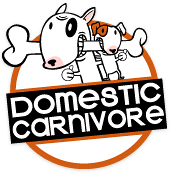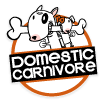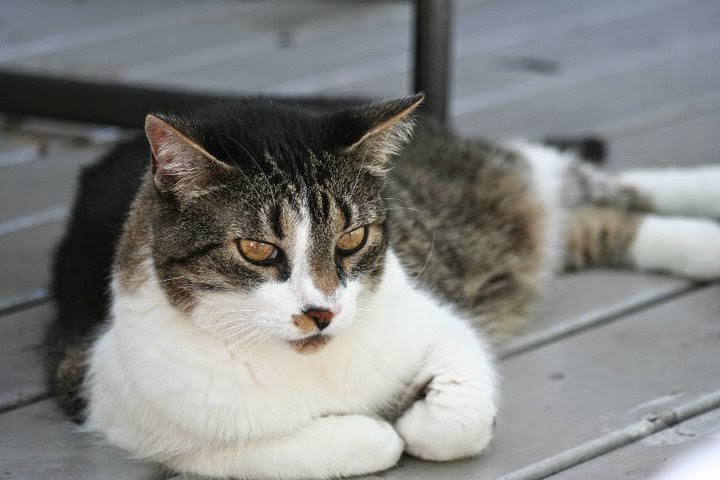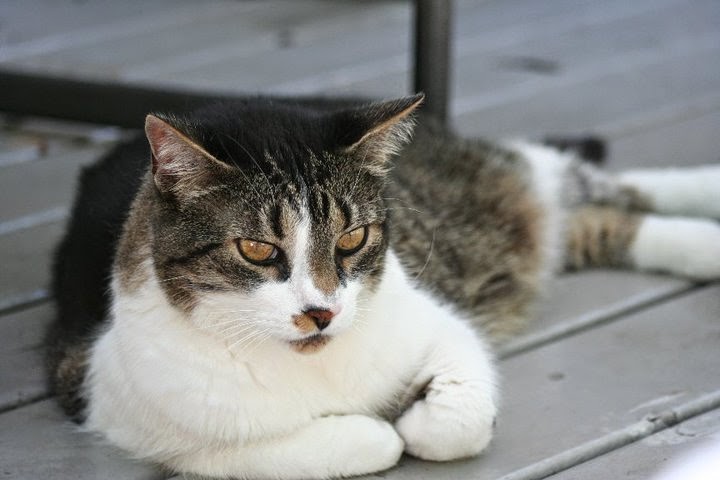Cats and dogs have been domesticated for thousands of years, but their anatomy is still virtually identical to their ancestors. They both have the anatomy of a carnivore, which are designed to gain nutrition through the consumption of animal protein. They have sharp, pointy teeth that interlock to tear apart their prey. Their short digestive tracts are designed to quickly process the nutrients from the food. Cats have been domesticated for over 10,000 years and kibble products are still less than 100 years old. Kibble was developed as a convenience item and not to meet the nutritional requirements of our pets.
There are many benefits that result from feeding our pets a species appropriate diet. A healthy skin and coat with cleaner teeth and better breath are some of the most noticeable differences. For pets with food sensitivities, a raw diet can successfully isolate food intolerances and reduce chewing and scratching. The most common benefit from feeding a raw diet to cats is the small, firm stool with reduced odour. When you feed a diet that can be fully utilized by your pet, they get optimal nutrition from the food and only expel a small amount of waste. This results in an easier to clean litter box with much less odour.
If you have ever transitioned a cat onto a different diet, you likely know how difficult it can be. Unlike dogs, cats imprint on their food at an early age. For this reason, introducing a cat to a new food with a different texture, taste, temperature, or smell is often met with resistance. Cats will starve themselves. There are many ways to transition cats onto a different food, but it is extremely important to ALWAYS provide food that your cat will eat.
When we meet an owner whose cat is already eating raw, we ask them how the transition went. If the cat started as a kitten, the transition is typically very quick. We’ve had an 8-week-old kitten that tried to eat everything and anything she was offered. For cats that started later on in life, the transition ranges from easy to extremely difficult. We even have a few multi-cat households where one cat loves raw and the other refuses to eat it.
This blog post is inspired by some of the experiences we have heard about in our store. Several cat owners have said they simply did not offer anything until the cat finally ate raw. Not only can this be damaging to your relationship with your cat, but in extreme cases, it could also result in the death of your cat. Cats can quickly develop a disease called hepatic lipidosis, which can be fatal. It is important for all cat owners to be aware that abnormal eating behaviour can be dangerous.
Read more about feline hepatic lipidosis here:
How can we successfully and safely transition a cat onto a raw diet?
There are many tips and tricks that have worked for numerous cats. In order to make the process as easy as possible, transition the cat onto wet food before making the switch to raw. Wet food is similar in texture to raw, so it can improve the success of a simple transition to a raw diet. If the cat is free-fed, switching to 2 meals per day will get him or her into the habit of eating when food is put down. Again, this needs to be done carefully to ensure the cat still eats.
There are many tips and tricks that have worked for numerous cats. In order to make the process as easy as possible, transition the cat onto wet food before making the switch to raw. Wet food is similar in texture to raw, so it can improve the success of a simple transition to a raw diet. If the cat is free-fed, switching to 2 meals per day will get him or her into the habit of eating when food is put down. Again, this needs to be done carefully to ensure the cat still eats.
When raw is introduced, squish it with a fork so it resembles the wet food. Balanced raw diets include bone so they should not be cooked or defrosted in a microwave or other cooking source. Some cats prefer the food a little warmer. Putting the food in a baggy and submerging it in room temperature water for 1-2 minutes can safely increase the temperature. The food should only be left down for 15 minutes. If the cat doesn’t eat in that time, return the raw food to the fridge and offer the cat’s regular diet. You can offer the raw again later, but if they continue to refuse it, it should be thrown out after the second try.
If the cat does not immediately take to raw, rub a small amount of food on their gums or on their paws. Cats will clean themselves and this can help them to adjust to the diet change. Adding a small amount of the raw to their wet food can also help. If they start to eat the entire amount, you can slowly increase the amount of raw and decrease the amount of wet food. The most important thing to monitor is that your cat is eating everyday. The benefits of a raw diet will speak for themselves, but the transition must be handled with care.
Zeddie, a gorgeous Savannah, loves her raw diet.
Here is a summary of the tips that have been successful for many cats:
1. If your cat is free-fed, switch to 2 meals per day.
2. Transition to wet food before making the switch to raw.
3. Put the food into a baggy and submerge it in room temperature water for 1-2 minutes.
4. Rub the raw food onto their paws or gums for them to lick off.
5. Add a little bit of raw to their wet food.
6. Increase the amount of raw and decrease the amount of wet food as they begin to eat the raw.
For owners who are dedicated to making a healthy diet change for their cat, it is often met with great success. You don’t know until you try and every cat will be different in terms of how quickly they transition. When selecting a food, freshness and ingredients are very important. You want to select a format that will be consumed in a maximum of 4 days. The fresher the food is, the more likely the cat will be to eat it. Ingredients are also important. Taurine is an essential amino acid for cats so you must select a food with sufficient levels of taurine. Taurine is found in meat, but certain products, such as heart and liver, contain higher levels of taurine. We offer several raw diets that are balanced for both dogs and cats, along with cat specific foods. If your cat stops eating their food, monitor the situation closely and be prepared to take your cat to the veterinarian if they haven’t eaten for more than a day.
If you have any questions for transitioning a cat onto a new diet, please feel free to contact us. Domestic Carnivore strives to improve the overall health and wellbeing of your pets.
Email: info@domesticcarnivore.ca
Phone: 289-238-8000
Website: https://www.domesticcarnivore.ca
In Store: 1142 Wilson Street West, Ancaster, Ontario




